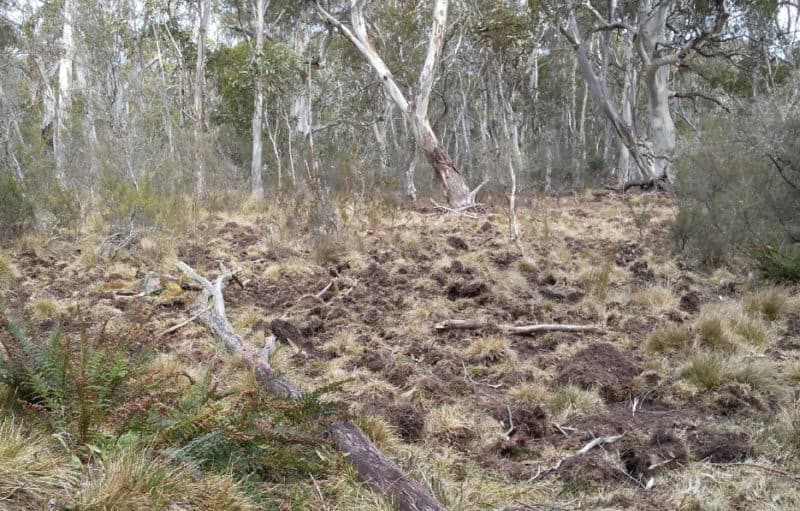PARK WATCH March 2019 |
Victoria’s draft Deer Management Strategy, released late last year, lacks ambition. It will not reverse the serious impacts deer are having across Victoria, says VNPA Park Protection Campaigner Phil Ingamells.
Government strategies are rarely simple things; they have to answer to many authorities, and the Victorian Government’s draft Deer Management Strategy is certainly no exception. It was developed by two departments, under at least two ministers, and was always going to be influenced by Victoria’s powerful hunting lobby groups and their representatives in parliament.
Deer impact our finest natural areas, our farms and road safety. The broad community, land managers and the police all have an interest in this strategy – and the Treasurer, of course, wants it to be cost neutral.
It’s no wonder the draft failed to address its key task: reversing deer population growth.
One million deer (there are six species in the state) are now occupying every terrestrial habitat, from the coastal dunes of East Gippsland to the High Plains, from the dry Mallee to Melbourne’s streambanks. And with a potential population growth of 30-40 per cent each year, they are poised to invade the rest of the nation. They eat almost everything within reach, ringbark trees by antler rubbing, and silt up waterways by wallowing in wet areas.
The strategy does acknowledges that “at least 1080 species of flora and fauna would benefit from deer control efforts across the state”, but almost every species of plant are browsed by deer, and the regeneration of even common species is now seriously compromised in many places.
It seems recreational hunters take out around 100,000 deer annually, well below the current reproduction rate of several hundred thousand, yet the draft still relies on recreational hunters to solve the problem.
It trumpets an estimated economic benefit of recreational deer hunting in Victoria of “$142 million per year”, however it doesn’t compare that to the far greater economic benefit of park tourism, currently estimated by Parks Victoria at $2.1 billion and 20,000 jobs.
Nor does it acknowledge the economic and social costs of the expanding deer population, including:
- increased park and other public land management costs,
- the extensive destruction of publicly funded revegetation projects,
- water catchment impacts,
- road accidents,
- the engagement of police and others in managing growing numbers of rogue hunters.
Most worryingly, the final strategy will only establish ‘a process’ for locating different deer management zones. There is no suggestion in the draft that the clear legal imperative to manage national and state parks for nature conservation will be observed in the setting up of that zoning system.
The strategy does encourage facilitating a deer pet food industry. But there is no serious intention to apply, or invest in the development of, new management strategies such as targeted baiting or biological controls.
Parks Victoria has been investing in a range of control programs involving accredited recreational hunters, and has also trialled professional aerial culling, but so far relatively small numbers of deer have been removed. Bizarrely, Parks Victoria still has to apply for a licence each time it plans to cull deer within its prime conservation estate.
Deer are now one of the most damaging feral animals in the state; any current legislation which gives real or apparent protection to them should be dumped.
Did you like reading this article? Want to be kept up to date about this and other nature issues in Victoria? Subscribe to our email updates.
You can also receive our print magazine Park Watch four times a year by becoming a member. Find out more here.
